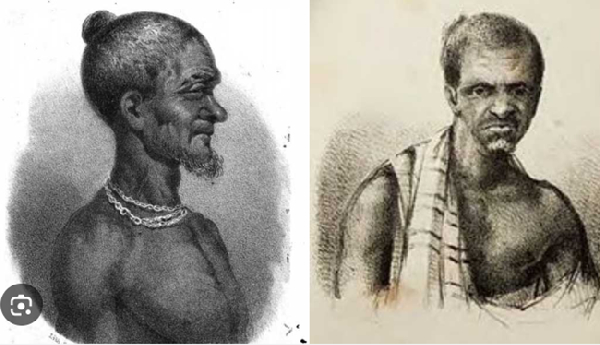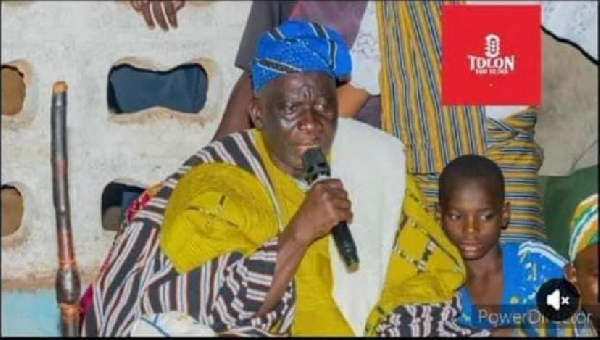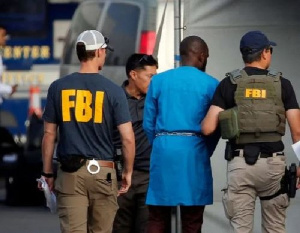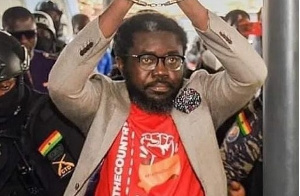The Story of Badu Bonsu II: The King whose head was kept in a jar for over a century

In 1883, King Badu Bonsu II, the leader of the Ahanta tribe in the Western Region of Gold Coast, now Ghana, was executed by the Dutch following a bitter conflict.
His death marked a dark chapter in the history of the Gold Coast, with repercussions that have resonated for years.
King Badu Bonsu II was believed to have had his head cut off by the Dutch as retaliation for the killing of two Dutch emissaries, George Maasen and Adrian Cremer. Their heads were displayed as trophies on the king Badu’s throne, an act that incited a violent response from the Dutch.
The circumstances surrounding the king’s execution remain steeped in history, but it is clear that his death was both a personal and political statement from the colonial powers.
Dutch author Arthur Japin uncovered the legacy of this moment while researching a historical novel.
In the process, he discovered the preserved head of King Badu Bonsu II in a jar of formaldehyde at the Leiden University Medical Centre.
The head had been there since its arrival in the late 1830s, after it was sent to the Netherlands following the king’s execution.
Japin, who had been researching the story of an Ahanta boy brought to Holland in 1838, stumbled upon the head after a decade of searching.
“I had been looking for the head for more than 10 years,” Japin explained. “As a novelist, you become obsessed with your subjects. Finally, in 2002, I found it locked away in a dark cupboard where it had been for more than 170 years.”
Japin was struck by the moment he discovered the king’s head, which had been turned white by the formaldehyde but still appeared life-like.
“It looked as if he was asleep. I felt, ‘This is so wrong, you should go home.'”
The return of the head
In 2008, after learning of the head’s location, the Ghanaian government requested its return, citing the cultural and spiritual significance of proper burial for the king.
According to Ghanaian tradition, without the burial of a deceased person’s head, the soul is believed to wander and be tormented in the afterlife.
In March 2009, Ghana’s government made it clear that the head would be returned to its homeland for proper burial.
A formal agreement was signed in The Hague, and in July 2009, the head of King Badu Bonsu II was handed over to Ghana, without compensation from the Dutch government.
The head was returned amidst a ceremony that saw leaders from the Ahanta tribe performing a traditional ritual, invoking the spirit of the king and calling for his peaceful rest.
In a deeply emotional moment, Ahanta tribe leaders poured alcohol on the floor of the conference room, while Ghanaian nationals dressed in red and black mourning colors paid their respects.
The transfer of the king’s head marked the end of a painful chapter in Ghana’s colonial history.
What led to King Badu Bonsu II’s killing?
The roots of King Badu Bonsu II’s conflict with the Dutch lie in the0 struggles over the exploitation of the Ahanta region.
In 1830, Badu Bonsu II began resisting Dutch colonial policies that sought to continue exploiting Ahanta’s resources under the terms of the Butre Treaty of 1656.
Tensions escalated when the king banned the sale of guns and gunpowder in his territory, a move that directly threatened the Dutch’s economic interests.
The Dutch responded by instigating emity among local subchiefs, including Eteroe of Sekondi, whom the Dutch manipulated to undermine the king.
When Badu Bonsu II sentenced Eteroe to death for selling weapons to neighbouring tribes, the situation worsened.
Eteroe sought refuge with the Dutch, and tensions eventually led to the Dutch sending troops to arrest the king.
The situation came to a head in 1838 when Badu Bonsu II, accompanied by armed men, confronted the Dutch at Butre.
During a meeting, the Dutch attempted to arrest him, but he resisted, leading to a violent exchange where he killed two Dutch officials.
He took their heads back to his palace, an act that set off a chain of events that would culminate in war.
The killing of the Dutch officials prompted a massive Dutch military response.
The Dutch sent an expedition of mercenaries led by General Jan Verveer to suppress the Ahanta resistance. After months of preparation, Verveer and his forces launched an attack on Badu Bonsu II’s stronghold in July 1838.
Following a fierce battle, Badu Bonsu II was captured on July 26, 1838.
The Dutch put him through a public trial and execution the following day. His head was cut off by a Dutch medical officer, Schillet, who preserved it in formaldehyde before sending it to the Netherlands.
The Dutch also executed several other Ahanta royals and shipped many others to the Dutch West Indies as slaves.
The brutal suppression of the Ahanta people led to the destruction of towns like Busua and Takoradi.
For years, the Ahanta region was left without a king, and the mysterious deaths of successive kings during the years that followed only added to the region’s sense of turmoil.
The aftermath
The impact of the Dutch invasion and the death of King Badu Bonsu II remains a painful memory for the Ahanta tribe, with the scars of that brutal colonial period still felt today.
In April 1872, as the Dutch left, the Ahanta people faced not only the loss of their king but also the legacy of a century of exploitation and violence that would take generations to overcome.
Source: www.ghanaweb.com





